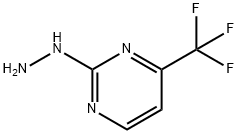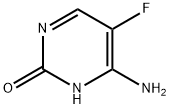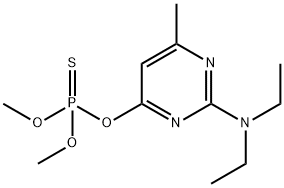2-Hydrazino-4-(trifluoromethyl)pyrimidine
- CAS NO.:197305-97-8
- Empirical Formula: C5H5F3N4
- Molecular Weight: 178.12
- MDL number: MFCD00115112
- SAFETY DATA SHEET (SDS)
- Update Date: 2023-04-23 13:52:06

What is 2-Hydrazino-4-(trifluoromethyl)pyrimidine?
Chemical properties
White to light yellow solid
The Uses of 2-Hydrazino-4-(trifluoromethyl)pyrimidine
2-Hydrazino-4-(trifluoromethyl)pyrimidine may be used as a derivatization reagent for the simultaneous determination of testosterone (T) and dihydrotestosterone (DHT) in murine tissue and serum. Synthesis of organohydrazide chelate complexes of rhenium and technetium. Preparation of 1-(4-methoxyphenyl)ethanone [(4-trifluoromethyl)pyrimidine-2-yl]hydrazone (NAS-75).
The Uses of 2-Hydrazino-4-(trifluoromethyl)pyrimidine
2-Hydrazino-4-(trifluoromethyl)pyrimidine may be used in the following studies:
- As derivatization reagent for the simultaneous determination of testosterone (T) and dihydrotestosterone (DHT) in murine tissue and serum samples by liquid chromatography-electrospray ionization-tandem mass spectrometry.
- Synthesis of organohydrazide chelate complexes of rhenium and technetium, having a metal-nitrogen-nitrogen linkage.
- Preparation of 1-(4-methoxyphenyl)ethanone [(4-trifluoromethyl)pyrimidine-2-yl]hydrazone (NAS-75).
Properties of 2-Hydrazino-4-(trifluoromethyl)pyrimidine
| Melting point: | 99-101 °C(lit.) |
| Boiling point: | 187.4±50.0 °C(Predicted) |
| Density | 1.62±0.1 g/cm3(Predicted) |
| storage temp. | under inert gas (nitrogen or Argon) at 2–8 °C |
| solubility | Soluble in aqueous acid. |
| form | powder to crystal |
| pka | 5.63±0.40(Predicted) |
| color | White to Orange to Green |
Safety information for 2-Hydrazino-4-(trifluoromethyl)pyrimidine
| Signal word | Danger |
| Pictogram(s) |
 Skull and Crossbones Acute Toxicity GHS06 |
| GHS Hazard Statements |
H301:Acute toxicity,oral H302:Acute toxicity,oral H311:Acute toxicity,dermal H312:Acute toxicity,dermal H315:Skin corrosion/irritation H319:Serious eye damage/eye irritation H331:Acute toxicity,inhalation H335:Specific target organ toxicity, single exposure;Respiratory tract irritation |
| Precautionary Statement Codes |
P261:Avoid breathing dust/fume/gas/mist/vapours/spray. P280:Wear protective gloves/protective clothing/eye protection/face protection. P311:Call a POISON CENTER or doctor/physician. P301+P310:IF SWALLOWED: Immediately call a POISON CENTER or doctor/physician. P304+P340:IF INHALED: Remove victim to fresh air and Keep at rest in a position comfortable for breathing. P305+P351+P338:IF IN EYES: Rinse cautiously with water for several minutes. Remove contact lenses, if present and easy to do. Continuerinsing. P405:Store locked up. |
Computed Descriptors for 2-Hydrazino-4-(trifluoromethyl)pyrimidine
New Products
4-Fluorophenylacetic acid 4-Methylphenylacetic acid N-Boc-D-alaninol N-BOC-D/L-ALANINOL Tert-butyl bis(2-chloroethyl)carbamate 3-Morpholino-1-(4-nitrophenyl)-5,6-dihydropyridin- 2(1H)-one Furan-2,5-Dicarboxylic Acid Tropic acid S-2-CHLORO PROPIONIC ACID ETHYL ISOCYANOACETATE 2-Bromo-1,3-Bis(Dimethylamino)Trimethinium Hexafluorophosphate (6-METHYL-[1,3]DITHIOLO[4,5-b]QUINOXALIN-2-ONE INDAZOLE-3-CARBOXYLIC ACID 4-IODO BENZOIC ACID (2-Hydroxyphenyl)acetonitrile 4-Bromopyrazole 5,6-Dimethoxyindanone 2-(Cyanocyclohexyl)acetic acid 4-methoxy-3,5-dinitropyridine 2-aminopropyl benzoate hydrochloride 1-(4-(aminomethyl)benzyl)urea hydrochloride diethyl 2-(2-((tertbutoxycarbonyl)amino) ethyl)malonate tert-butyl 4- (ureidomethyl)benzylcarbamate Ethyl-2-chloro((4-methoxyphenyl)hydrazono)acetateRelated products of tetrahydrofuran





![ETHYL 2-OXO-2-(2-[4-(TRIFLUOROMETHYL)PYRIMIDIN-2-YL]HYDRAZINO)ACETATE](https://img.chemicalbook.in/StructureFile/ChemBookStructure2/GIF/CB6122889.gif)
![ETHYL 2-(2-[3-(CHLOROMETHYL)BENZOYL]HYDRAZINO)-4-(TRIFLUOROMETHYL)PYRIMIDINE-5-CARBOXYLATE](https://img.chemicalbook.in/StructureFile/ChemBookStructure4/GIF/CB1458549.gif)

You may like
-
 2-Hydrazino-4-(trifluoromethyl)pyrimidine CAS 197305-97-8View Details
2-Hydrazino-4-(trifluoromethyl)pyrimidine CAS 197305-97-8View Details
197305-97-8 -
![N-[4-(Trifluoromethyl)pyrimidin-2-yl]hydrazine CAS 197305-97-8](https://img.chemicalbook.in//Content/image/CP5.jpg) N-[4-(Trifluoromethyl)pyrimidin-2-yl]hydrazine CAS 197305-97-8View Details
N-[4-(Trifluoromethyl)pyrimidin-2-yl]hydrazine CAS 197305-97-8View Details
197305-97-8 -
 1975-50-4 98%View Details
1975-50-4 98%View Details
1975-50-4 -
 2-HYDROXY BENZYL ALCOHOL 98%View Details
2-HYDROXY BENZYL ALCOHOL 98%View Details
90-01-7 -
 2-Chloro-1,3-Bis(Dimethylamino)Trimethinium Hexafluorophosphate 221615-75-4 98%View Details
2-Chloro-1,3-Bis(Dimethylamino)Trimethinium Hexafluorophosphate 221615-75-4 98%View Details
221615-75-4 -
 61397-56-6 CIS BROMO BENZOATE 98%View Details
61397-56-6 CIS BROMO BENZOATE 98%View Details
61397-56-6 -
 14714-50-2 (2-Hydroxyphenyl)acetonitrile 98+View Details
14714-50-2 (2-Hydroxyphenyl)acetonitrile 98+View Details
14714-50-2 -
 118753-70-1 98+View Details
118753-70-1 98+View Details
118753-70-1
Statement: All products displayed on this website are only used for non medical purposes such as industrial applications or scientific research, and cannot be used for clinical diagnosis or treatment of humans or animals. They are not medicinal or edible.